Behind the scenes of 'Escape from Planet Earth'
Before an animated shot is finished, it has to pass a critical series of tests, as Escape from Planet Earth shot finalling supervisor Nate Barnard explains.
Rainmaker’s first theatrical feature, Escape From Planet Earth, is an achievement we had been working towards for a long time. We had years of experience doing straight-to-DVD releases, as well as higher production value projects such as gaming cinematics and trailers for popular titles such as Splinter Cell, Driver, and Prototype. Rainmaker’s pipeline was battle-tested and our crew had years of experience making family entertainment. When the opportunity to team up with The Weinstein Company on Escape came up, we were ready.
Like many feature films, Escape was in development for years before it really got going. Things moved along slowly until late 2010 when director/writer Cal Brunker and co-writer Bob Barlen joined the team, and production kicked into high gear.
What went right
1. We had great people in the right places
The success of Escape From Planet Earth is testament to the whole team, but it’s worth mentioning some of the team leaders who really set the tone for everyone else. The director of the film, Cal Brunker, believed strongly in one-on-one time with the artists. Every day he did desk dailies in each department, giving specific feedback and communicating his vision directly to the artists. Having that personal relationship with the director not only made for clear communication, but also proved to be incredibly empowering for the crew. He would encourage new ideas and collaboration, and this positive energy spread through the team.
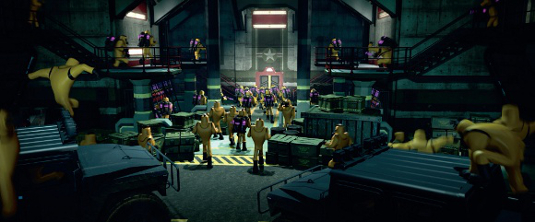
Brunker brought Matthew Ward on board as director of photography. He’s an incredibly passionate and skilled DP who learned his craft from some of the best in the business. Ward was meticulous about every shot in the movie – composing each frame and each camera move with precision and purpose.
Our animation director was Pixar veteran Adam Wood. The relationship Wood built with Cal Brunker was a mind-meld of talent and ideas. Wood also brought great physical comedy and strong performances to the animation of the movie.
Other vitally important contributors to the film included art director Matthias Lechner, modelling supervisor James Wallace, lighting supervisors Chris McNish and Pat Beauchamp, texturing lead Jeremy Sikorski, and the incredible production technology (PT) team including Tony Pelle, Vlad Monachov, and Alex Segal. All of these people continually raised the bar in order to make Escape a success.
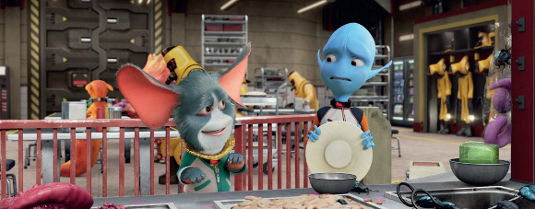
2. We started the project with a strong yet adaptable pipeline
One of our biggest challenges was the short schedule. Due to the fact that we were working on the script and building assets in tandem, all models, rigs, sets, and elements had to evolve while being used. These updates were channelled through our pipe in order to minimise the amount of work that would need to be redone due to asset updates.
Get the Creative Bloq Newsletter
Daily design news, reviews, how-tos and more, as picked by the editors.
Our tools evolved along with the production. In shot finalling, we were fortunate to have a brilliant production technology TD, Asi Sudai. He would update tools and scripts for us on the fly, keeping us from breaking the pipe. If we didn’t have such a robust and adaptable pipeline – along with such great PT support – we would have been lost.
3. We added the little extras and caught mistakes while they were cheap
As the supervisor of the shot finalling department, I was the last person in the pipeline to see and approve a shot before the incredibly expensive process of lighting and rendering. I’d stand at my desk in front of a 55-inch monitor and examine each shot, frame by frame, for technical and creative fixes. I would then make corrections myself, or delegate them to members of the shot finalling team.
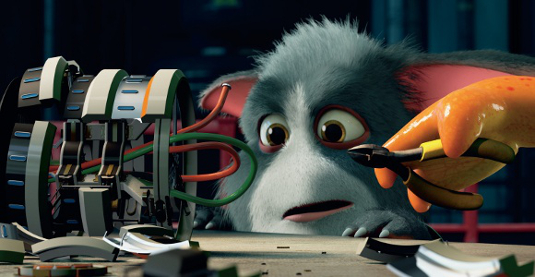
Virtually every one of the film’s 1,800 shots needed to be fixed or improved in some way. There might be a twitch in the cloth sim, a pop in an animation curve during an IK/ FK switch, hair crashing through geo, geo crashing through geo, assets entirely missing, an incorrect camera, continuity breaking from shot to shot – the list goes on. We also added deformations to the baked animated geometry for character interactions with glass and other surfaces that required it. We worked closely with every department to make sure assets were working and rendering correctly. We would then double-check with the director of photography to ensure cameras, compositions, and set dressing were working for him. Finally we would present the shot to the director for approval. This process allowed us to reduce the number of shots that needed to be fixed after going through lighting.
What went wrong
Scale and character line-ups
Even though we started with approved character line-ups, as the story evolved it became clear that certain combinations of characters didn’t look right when they shared the screen together. One of the biggest continuity challenges was trying to wrangle character scale changes while in the middle of animation.
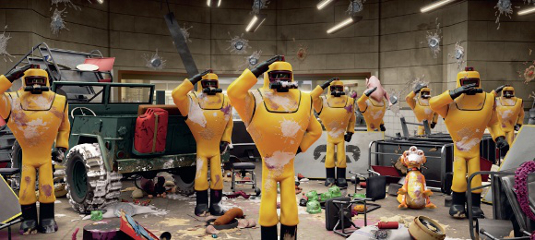
You can get away with scaling the occasional unanimated asset, but if you start adjusting character scale from shot to shot it quickly becomes a continuity nightmare. The leg stride and arm swing proportions change, interactions and eyelines break, and each shot requires specific troubleshooting that takes additional time. Will it be cheaper to scale up one character over another? Do they have cloth sim? Can you see their ground contact? The desk came up to his shoulder in the last shot, but now it comes up to his chin! Can we just lower the camera and tilt up to cheat the scale? You quickly realise that any change means the shot will need to pass back through almost every department.
Lessons learned
Over the course of every production, the story that you are telling naturally evolves. New ideas emerge that make the film better; the script is revised and improved; the storyboarding process takes the story from a screenplay into a visual medium. The same transition happens when the film enters a CG environment. While it would be convenient to say, “The script must not change!” we were successful because we were able to embrace change as it happened, and had both the pipeline and the right people to handle it.
On Escape From Planet Earth, we learnt the value and necessity of the shot finalling department – we originally planned for a crew of three people but ended up having a team of six. Shot finalling goes by different names at different studios but, by any name, it’s an imperative part of the process. When the entire Escape crew watched the final movie, I saw the joy on their faces. I was proud that the shot finalling team was able to elevate all the incredible work that had come before us.
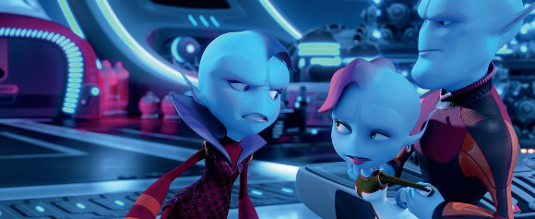
VITAL STATISTICS
Project: Escape from Planet Earth
Studio: The Weinstein Company
Format: Feature animation
Client: Rainmaker Entertainment
Time taken: Two years
Team size: Escape had as many as 120 artists working on the film. The shot finalling team consisted of six full-time artists
Software used: Maya, mental ray, Nuke, 3ds Max, Cinema 4D, After Effects, Photoshop, Illustrator, RealFlow, Avid, Shotgun
Release date: 15 February 2013 (UK, USA & Canada)
Nate Barnard has over eight years of experience in CG animation production, and was shot finalling supervisor on Escape from Planet Earth. He has also worked on HD gaming cinematics and trailers for Driver and 50 Cent, among others
Discover the best 3D movies of 2013

Thank you for reading 5 articles this month* Join now for unlimited access
Enjoy your first month for just £1 / $1 / €1
*Read 5 free articles per month without a subscription

Join now for unlimited access
Try first month for just £1 / $1 / €1

The Creative Bloq team is made up of a group of art and design enthusiasts, and has changed and evolved since Creative Bloq began back in 2012. The current website team consists of eight full-time members of staff: Editor Georgia Coggan, Deputy Editor Rosie Hilder, Ecommerce Editor Beren Neale, Senior News Editor Daniel Piper, Editor, Digital Art and 3D Ian Dean, Tech Reviews Editor Erlingur Einarsson, Ecommerce Writer Beth Nicholls and Staff Writer Natalie Fear, as well as a roster of freelancers from around the world. The ImagineFX magazine team also pitch in, ensuring that content from leading digital art publication ImagineFX is represented on Creative Bloq.
